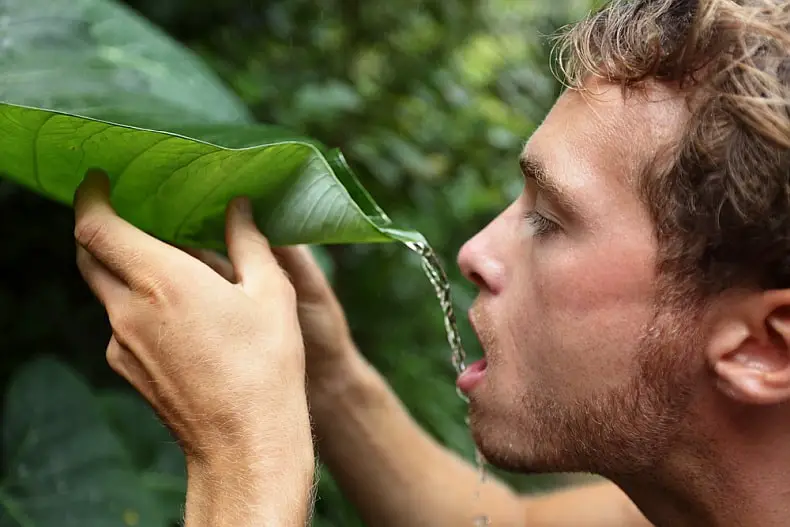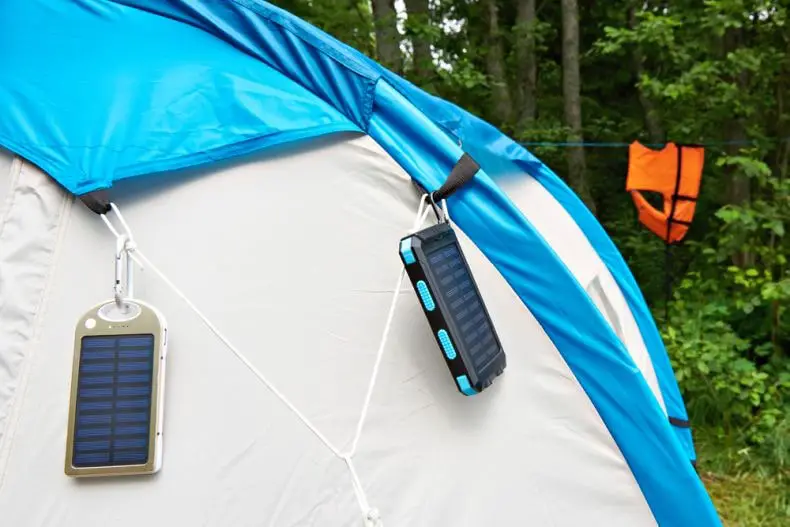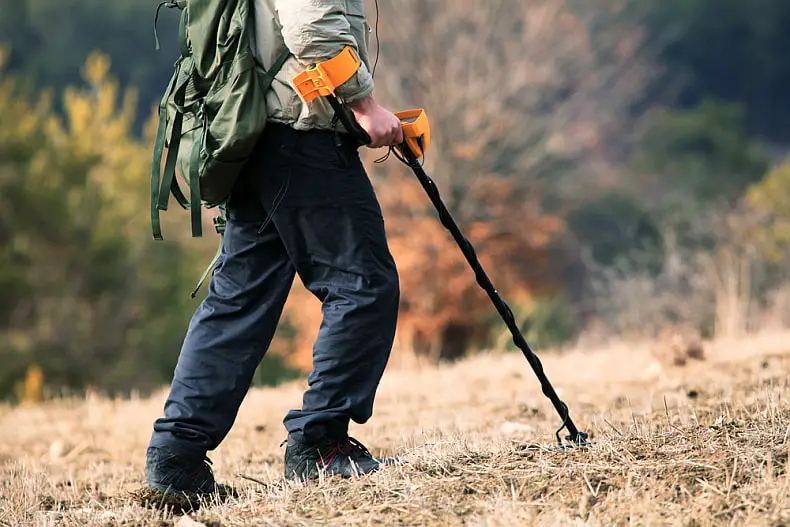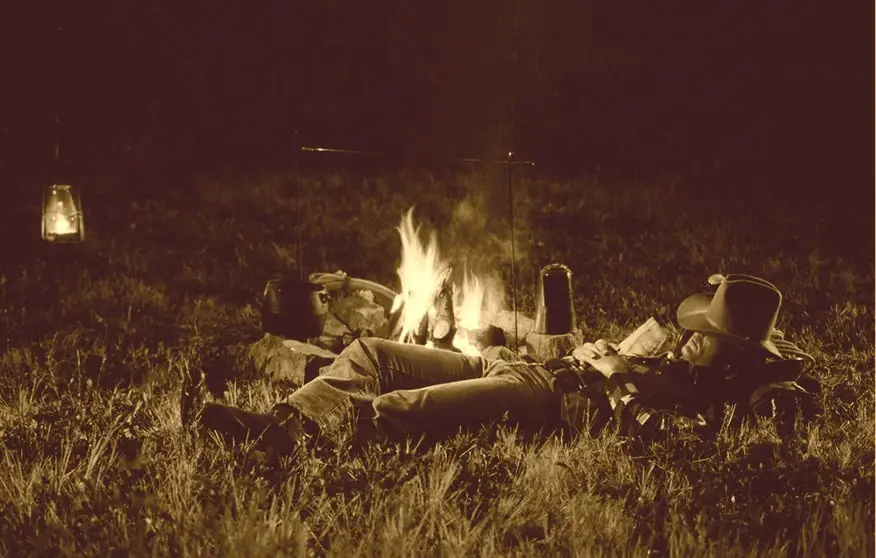If you ever find yourself in a survival situation, the best thing to do is not panic. There is a way to get past this and make it out alive. However, it all starts and ends with water. The question many might have then is, well, how can you find water in a survival situation?
The answer is simple, but it depends on your location. You can find water by digging around green areas, in some branches or trees, by following bees & birds, and many more. You can even turn your own sweat into drinkable water or hydration.
A lot of the time, water can be the key to survival. This is due to the infamous “Survival Rule of 3.” Which states you can live 3 weeks without food, but only 3 days without water. This is the best possible outcome as well. Many will not survive a day or two without water.
Therefore, the Rule of 3 is good to keep in mind but you should never assume it will work for you. Considering you clearly never want to get into a situation where an issue like a lack of water comes up.
Water also plays an important role in survival beyond just using it to drink too.
Table of Contents
Where Can I Find Water?

It can be hard to find water when you need it the most. The best rule of thumb is to dig wherever you see green. What we mean is, if there is a lot of green around you…there must be a way these plants and/or trees are getting water. More than likely, some will still be underground.
Dig at least a foot and you should start to feel something cold and/or wet. If you begin to see water fill in the hole, dig it to about three feet and allow it to fill. You’ll have a natural water source, and it’s safe to drink from due to not being contaminated by any source.
You can do the same thing in muddy areas, as water will have likely collected underground near here. Otherwise, there would not be any mud, of course!
If you’re in a desert area, you can even dig near dried-up water or creek beds. It is possible that water is still there somewhat. Plus, if you’re in a desert, you can cut into cactuses as well since they contain water.
Some branches will collect it but by far, the most well-known collector of water is bamboo. This stuff can be found all over the world and it’s a great source for numerous toolmaking, clothing, and bedding purposes. Yet bamboo collects tons of water. You might get a liter or two out of just one!
Make Sure It’s Safe To Drink
A lot of people assume they can drink water right from the source. While this is likely the case if you dig it up, you’ll be risking a lot of potential infections and/or pathogen contact if you drink straight from a stream, creek, river, or lake.
It might take a few days for symptoms to kick in, so if you cannot make it safe at the time but you feel you’ll be rescued or get out before then…it might be worth the risk to drink it. Yet as a rule, you should make it safe.
This can be done mostly by boiling it. You’re still going to risk coming in contact with some issues in spite of boiling, but it’ll be far less and those possible issues will be far less problematic than what you could get by not boiling.
Don’t Forget To Boil Snow & Don’t Drink Pee:
A lot of people think you can just pick up snow and eat it like it’s not a problem, but this is not actually true. You need to boil it the same way you would with other water. It can contain just as many issues. Depending on where you live, it can even be contaminated with chemicals.
We’ve seen things like red or orange snow in the past due to chemicals that got into the air from factories. This is more of an issue in Asia than anywhere else…but it is still worth considering.
A lot of people think you can drink your pee in a survival situation. Technically speaking, you “can” drink it but only after the initial unloading. The first batch will be packed with a lot of bad stuff whereas the second will contain less.
However, even boiling is not guaranteed to get rid of every single problematic pathogen or bad bacteria. Yes, pee is technically a water source but you should avoid drinking it unless you have no other possible option. It should never be your first, second…even third choice.
Water Will Save Your Life In 3 Ways
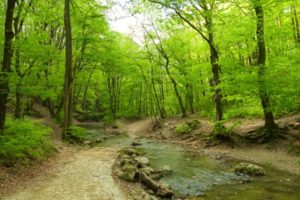
Back to number three again, water is known to save people in at least 3 different ways. The first we already covered. You need water in your system to survive, of course. Yet Water can also be key to your rescue and you can travel on it much faster than you can walk through places.
Where there is water, there are going to be people. Mankind has always settled near water sources. While we do not have to live right near water anymore, we do need to be able to access it. People will still live and/or work near water sources all hours of the day & night.
As a result, if you follow water….you’ll eventually come in contact with civilization at some point.
How To Follow Water In The Right Direction:
Of course, like with anything, there are some exceptions to this. If you follow water the wrong way, you can potentially go deeper into a forest, swamp, etc. Thus, you might not come across people at all, or you might not for a lot longer.
The way to avoid this issue is to follow water toward where moss tends to grow the most. It is not completely foolproof, but it can help you know where water is leading out to. If you’re following a small section of water, moss can help lead you to the bigger version.
You can also follow animals, especially birds and bees. They are always going to know where water is or be close to it
Another thing you can do is follow water downstream. Mankind has often been downstream rather than upstream in our history. The same situation exists today.
Water Travel:
Of course, following water downstream is very common, and it also allows you to travel on a large enough water source. If you build a raft or happen to already have a raft, canoe, or something similar….you can use that to travel downstream to civilization.
This might take a while to do sadly. It all depends on how lost you have become. We’d recommend never getting lost, to begin with. The cool part is that if you travel downstream, there is no risk of going in circles or getting turned around and confused.
You’re traveling in one direction on the water, and it does not go in reverse randomly. At least, it does not “usually” decide to change direction. As a result, if you travel on the water…you’ll get to civilization faster than you would by walking.

